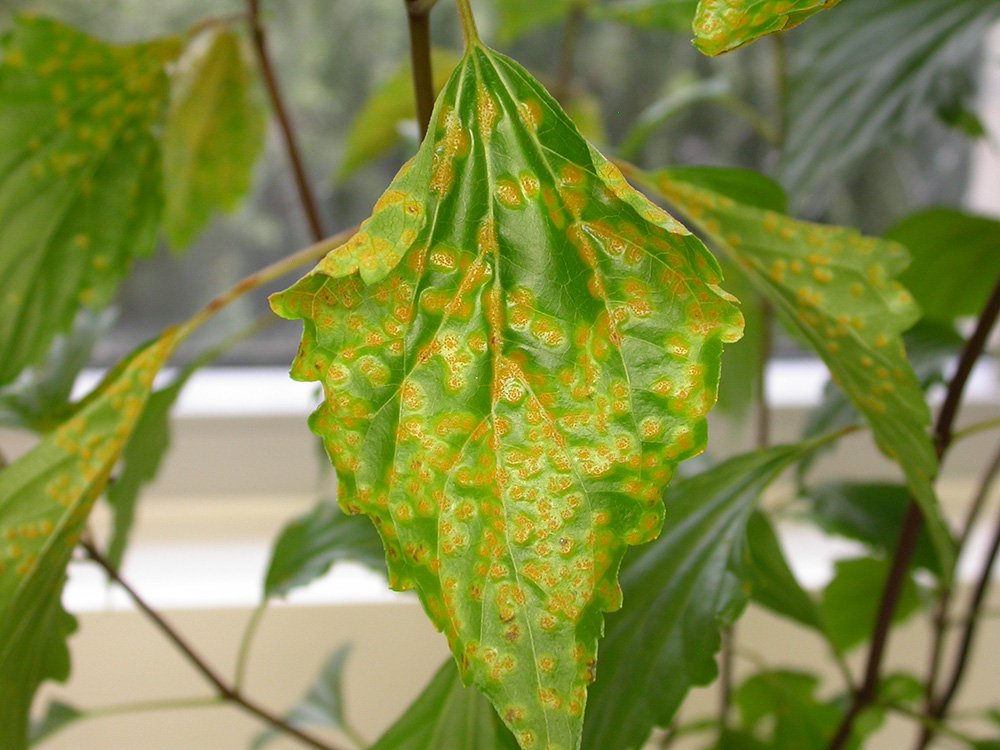A second wind: biocontrol on Lord Howe Island

LORD HOWE ISLAND is a biological wonder. From the moment of its volcanic formation seven million years ago until its discovery on the 17 February 1788, the tiny arc of land had been left to its own evolutionary devices, with remarkable effect. Today, the island is UNESCO World Heritage Listed for its unique ecosystem of endemic birds, reptiles, insects and flora, 40 per cent of which are found nowhere else in the world.
So why have scientists deliberately released a pathogenic rust fungus into this precious environment? They don’t want to harm the biodiversity here, they are in a race to protect it.
The idea of so-called biological control or ‘biocontrol’ – using natural enemies to wipe out invasive pests – has pretty dire associations in the minds of most Australians, thanks to the notoriously catastrophic introduction of cane toads in 1935, which became a far more serious problem than the cane beetles they were introduced to control.
However, there are several less publicised success stories, including wiping out a plague of pricky pear in the 1930s – and we’ve come a long way since then, with more sophisticated science, and more stringent checks and balances in place. More recently, one of Tasmania’s worst agricultural weeds, ragwort, has been successfully brought under control thanks to the introduction of several invertebrate enemies. And late last year, scientists released a tiny wasp onto Christmas Island to control a yellow crazy ant infestation.
So why do scientists hope to wage biological battle on Lord Howe Island?
The problem began in the 1940s when a perennial herb, Ageratina adenophora, was introduced to Australia. The seemingly harmless Crofton weed, as it’s now called, instead proved to be aggressive and noxious.
From pastureland to rock falls, Crofton weed grows wherever it can find disturbed soil then out-competes native plants for space and nutrients. Meanwhile, the roots release chemicals that are toxic to nearby plants.
Crofton weed spreads quickly: one square metre can release 60,000 airborne seeds. By the 1950s, it had invaded most of coastal NSW and south-east Queensland. By the late 1960s it had reached Lord Howe Island.
Curiously, Crofton weed stagnated on Lord Howe for a few decades, but now it’s thriving. Sue Bower is the Flora Management Officer with the Lord Howe Island Board. She says that feral goats – in addition to damaging the native ecosystem – had been eating Crofton weed.
“After these herbivores were eliminated from the ecosystem, Crofton weed has been able to proliferate,” she says.
In the southern mountains, rock fall disturbances, waterfalls and sunlight create a perfect microclimate for Crofton weed. Here, dense monocultures disrupt the growth of rainforest pines into mature forest, and threaten the critically endangered flowering vine Calystegia affinis.

Crofton weed leaf affected by rust fungus. (Image: CSIRO)
Bower says the weed will soon invade waterfall plant communities, which have nowhere else to go. Without action, she says the problem will only get worse.
According to Dr Louise Morin, a biocontrol expert with CSIRO, “You can kill Crofton weed with herbicide, but the problem is you can never stop.”
Anything missed reignites the invasion, and using herbicide on Lord Howe is costly and impractical because of Crofton weed’s rapid growth in difficult terrain.
For Morin, the answer lies in the reason alien plants become invasive in the first place. “They come here without any of their specialised insects or diseases,” she says.
Finding these potential allies requires evolutionary detective work. By searching where Crofton weed originated in Central America, Morin and her team found a rust fungus from Mexico that makes Crofton weed very unhappy.
Rust fungi are notorious plant pathogens that wreak havoc on healthy plants, damaging growth and reproduction. Airborne spores make infection hard to control. Fortunately, most rust fungi are extremely host-specific because each has evolved ways to evade its host’s particular defences. With rare exceptions such as Myrtle rust, which infects many species within a family, most rust fungi harm only a few closely related hosts.
The Mexican rust damages Crofton weed’s leaves so they can no longer photosynthesise efficiently. Severe infection also reduces flowering and seed production.
“This tips the balance,” says Morin. Native plants can now compete.
Importantly, the CSIRO research determined that the rust is highly specific to Crofton weed, and does not harm native Australian species nor crops.
Beginning in 2014, with a great deal of community consultation, they released the Mexican rust on the NSW coast. After 250 releases, Crofton weed is starting to struggle at many sites, while native flora regenerates.
“It’s exceeded expectations,” says Morin, adding that the rust is now spreading naturally, several kilometres a year.
So in July 2016, with the permission of the Lord Howe Island Board, rust-infected Crofton weed plants were placed around the island. Sue Bower soon had good news to report: native plants surrounding the cuttings are looking healthy, as expected, while the rust infection is spreading to local Crofton weed. There are signs of spotting, drooping leaves and swollen stems.
“What I’m happy to see is the mature pustuling stage,” says Bower. “It means more spores will be floating around.”
Now, it’s up to the wind.
READ MORE:
- Prickly pear: The tangled mess that once choked Australia
- A tiny wasp could save Christmas Island’s red crabs




